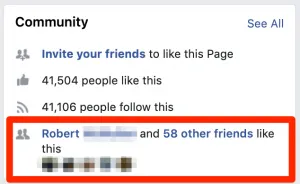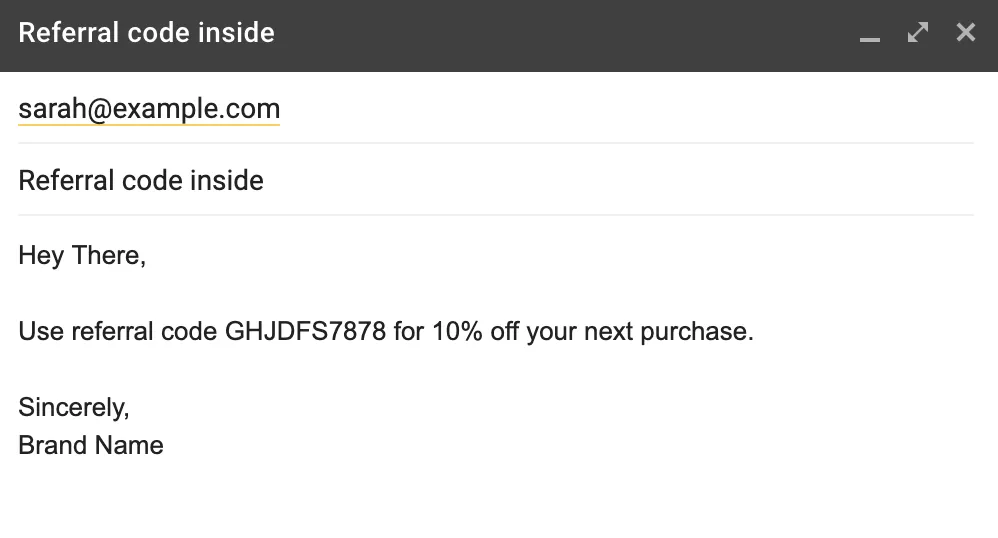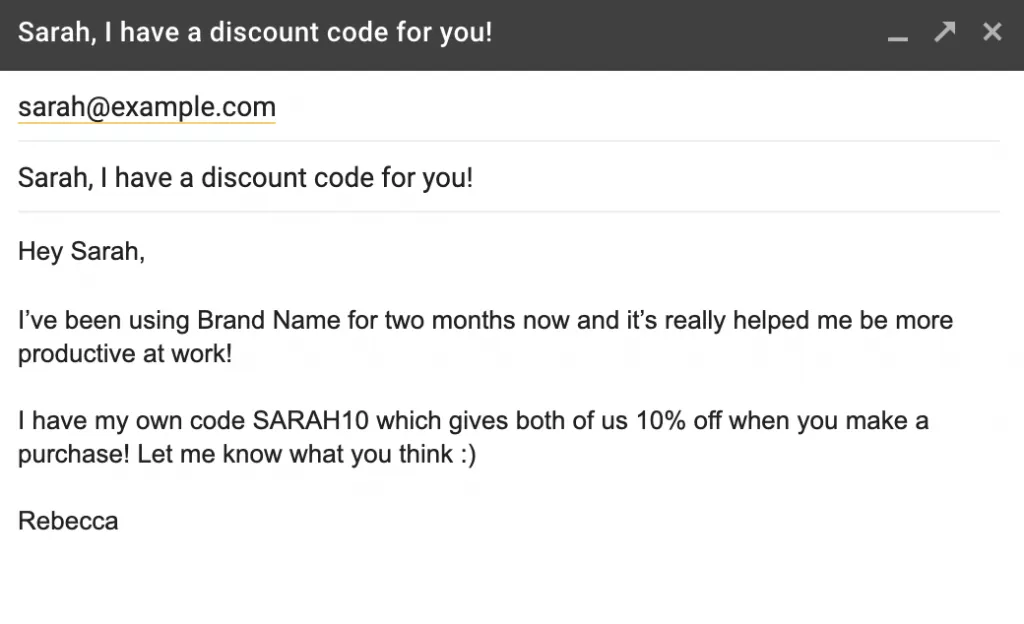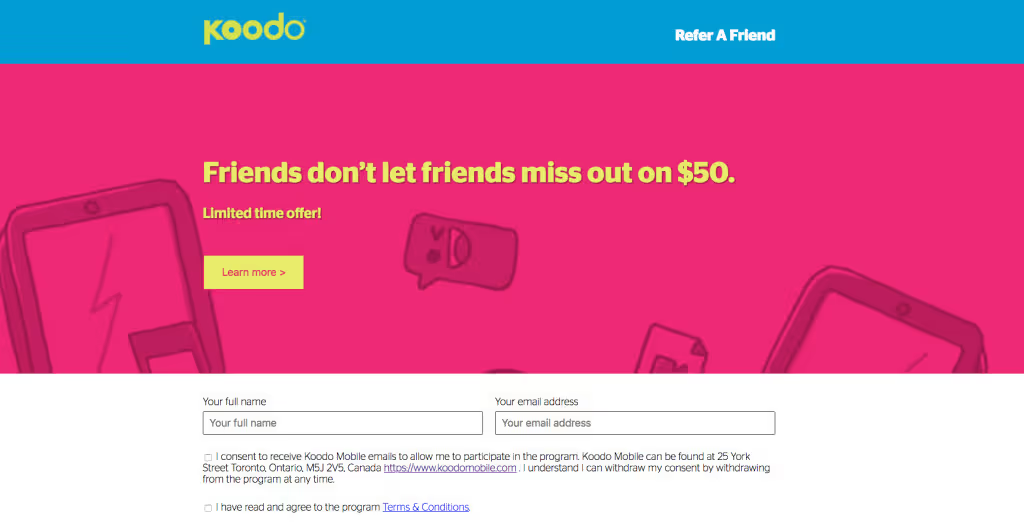6 Ways to Get More Referrals with Psychology
Marketing is all about influence. It’s about getting customers to say “I need that!” and “I’ll buy that!”.
But what’s the difference between ads and prompts that engage us and ones that we scroll right past? What makes us say “yes” to one offer and “no thanks” to the rest?
It all comes down to how we’re being influenced, even if we aren’t aware of it.
The best marketing campaigns draw on psychological principles that inherently motivate customers to say “yes”. By knowing how to integrate this into your referral programs, you can increase conversions, boost sales, and grow faster than ever before.
One of the most well-known books on this topic is influence: The Psychology of Persuasion by Dr. Robert Cialdini. Dr. Cialdini has dedicated his entire career to experiments and research that help us understand why people say “yes”, and how we can apply these understandings to life and business.
The book outlines six universal principles of influence:
Instead of just hoping for more referrals, use these “weapons of influence” to take your referral program to the next level.
Note: All quotes and experiments cited are from the aforementioned book unless otherwise noted.
1 - Reciprocity: Give and you shall receive
The reciprocity principle states that we should try to repay what another person has provided us. In other words, we’re likely to give after we receive.
It’s why we feel inclined to give our friend a birthday gift because they gave us one that year, or why we feel obligated to help our friend move house when they helped us on our moving day - we don’t like to feel indebted to others!
Anthropologists even credit the success of early humanity to reciprocity: “We are human because our ancestors learned to share their food and their skills in an honored network of obligation.”
This “obligation” to reciprocate overpowers almost everything. In 1985, $5,000 of relief aid was sent to Mexico from Ethiopia. This gesture surprised many, since Ethiopia was suffering from a poor economy, low food supply, internal wars, and extreme disease and starvation rates. But despite all of this, the money was sent because Mexico had provided relief money to Ethiopia at the time of an invasion by Italy in 1935.
The obligation to reciprocate the gesture withstood not only the test of time, but transcended cultural differences and extreme poverty.
Smaller-scale instances of this are seen in everyday life. Cialdini states that if a restaurant server brings you the bill and doesn’t include a candy with it, you’ll tip whatever amount you feel is deserved. If the server does include a mint, tips go up 3.3%.
Cialdini mentions how this principle has been established over time to let us develop reciprocal relationships with others. By trusting reciprocity, we are more willing to offer something first without the fear of loss. If an un-prompted first favor produces an obligation to return it, we are more likely to initiate it.
How to leverage reciprocity in your referral program:
- Offer double-sided referral rewards: When asking a customer to refer a friend, give both the referring and referred user a reward (ie. 10% off) for a successful conversion. This does a few things:
- The referring customer feels better about initiating the referral as it's clear that both them and their friend will benefit
- The referred customer feels comfortable accepting the offer when it's clear that both them and their friend will benefit
- Both the referring and referred customer will be more willing to reciprocate your generous offer by making a purchase
You create a reciprocal relationship between your brand, your customers, and their friends, and no one party feels indebted to the other.
- Start giving before (and after) the referral: We don’t typically recommend giving out a referral reward before a successful conversion (ie. first purchase) because this can easily lend itself to fraud.
However, we do recommend priming your customers with other ways to earn rewards before you ask for a referral. For example, you can start setting up the reciprocal relationship when the customer signs up for an account by sending them a welcome bonus, or sending them a profile completion reward.
By the time the customer has made their first purchase, they already feel indebted to you, increasing the likelihood that they’ll share your business with a friend. Keep the reciprocity going with birthday rewards and VIP perks to encourage more referrals in the future. Learn more about offering rewards throughout the customer lifecycle.
2 - Commitment and Consistency: We are who we say we are
The commitment/consistency principle suggests that if we commit to the idea of doing something, we’re more likely to follow through when presented with the opportunity to do so.
Once we have made a choice, our innate need for consistency pressures us to think and act in ways that justify that decision.
To prove this effect, one psychologist phoned a sample of residents asking them to “predict what they would say if asked to spend three hours collecting money for the American Cancer Society.” Many people said they would volunteer, as to not seem uncharitable. A few days later, a representative of the ACS called asking for volunteers. By prompting an early verbal commitment, volunteer participation rose 700% as people followed through on their earlier response, aligning their words with their actions.
Similarly, the turnout at a US presidential election increased significantly among a group of residents after they were called and asked to predict if they would vote on election day.
In today’s digital world, you can find this worked into the smallest details of marketing copy. Instead of just closing the popup that asks you to donate money, you click the button that reads “I’ll do it later”. It’s also why brands collect email addresses, sending content that makes the user feel like they are already a customer in the hopes that they will act like one.
How to use the commitment principle in your referral program:
- Let customers commit to making a referral: Just like with the experiment committing to volunteering, present your customers with an easy and quick way to agree to making a referral later. This can be as simple as a quick popup that says “Are you likely to refer customers to our product?”
This doesn’t actually require them to do anything besides click Yes or No. However, it primes them for the upcoming moment when you ask those who responded Yes to send a referral code to a friend.
- Remind customers that they already “like” your brand: Identify segments of customers who “like” your brand on Facebook, or who open the majority of your emails. By drawing attention to the fact that the customer enjoys engaging with your brand, they will easily identify as an advocate, and a referral is the perfect action to align with this belief.
- Thank them for their referrals to shape their identity: By recognizing a customer’s contributions to your referral program, you help define their identity as a “referrer”. When reminded that they are someone who gives referrals, they will start to adopt this identity and continue to align their actions to support it.
3 - Social Proof: Monkey see, monkey do
At least one time in your life, you’ve chosen one brand over another because “everyone else was using it”.
The principle of social proof states that one way we determine what is “correct” is by observing what other people think is correct. It reassures our decisions and puts us at ease.
If we’re not sure how fast to drive on the highway, or how much food to take from the buffet, we turn to the actions of others to define the answer. We do this to avoid ridicule and minimize the risk of being wrong.
Cialdini cites an experiment from 1967 where a small group stood on a busy sidewalk in New York, looking up at a blank spot in the sky. This caused 80% of passerby to lift their gaze to the same spot, unable to resist the pressure to join what everyone else was doing, even if it was totally pointless.
Watch another example below:
In marketing, brands feature customer reviews, testimonials, and case studies to help us make purchase decisions.
Here are a few more examples of social proof at work:
Social networks show you which of your friends are following a particular topic or page, in an effort to encourage you to do the same:

Brands use specific tools to show you who else just bought their product, trying to give you confidence that it must be the correct thing to do:

How to power your referral programs with social proof:
By leveraging this principle, your goal is to make people see the act of giving a referral as an expected societal norm (ie. something that everyone is doing):
- Emphasize the popularity of your referral program: When encouraging customers to make a referral, use messaging to quantify its usage. For example, “Customers have earned $5,000 worth of free merchandise by referring new friends!” or “Our referral program is growing! Join 500 other customers who are referring friends and getting rewarded!”
- Display social proof to support your referral program: When websites feature social proof, it’s usually in the form of reviews and ratings supporting the product itself. Since we recommend that you have a dedicated explainer page on your website to promote how your referral program works, use this space to showcase positive customer feedback about your referral system.
4 - Liking: The selling power of a strong bond
The fourth principle of influence states that the more we like someone, the more likely we are to comply with their requests.
Cialdini outlines how the infamous Tupperware parties are a great example of likeness in action. The host of a Tupperware party invites their friends over to play games, mingle, and check out different containers, all with the end goal of selling Tupperware to the guests for a commission of each sale. The success of this arrangement comes from the fact that guests are buying from the friend as opposed to an unnamed salesperson:
It’s gotten to the point now where I hate to be invited to Tupperware parties. I’ve got all the containers I need; and if I wanted any more, I could buy another brand cheaper in the store. But when a friend calls up, I feel like I have to go. And when I get there, I feel like I have to buy something. What can I do? It’s for one of my friends.
Simply put, it’s hard to say no to people we like. It also explains why 92% of consumers trust recommendations from family and friends above all other forms of advertising.
How to use the likeness principle in your referral program:
- Personalize customer referral prompts: When asking customers to make a referral, personalize the process as much as possible to leverage the social bond. Check out the difference between these two emails:


The first email does not leverage the power of the friendship between Sarah and Rebecca at all, but rather sounds like an automated message. The receiving user will be more inclined to accept the offer in the second email because it’s clearly coming from their friend, triggering the likeness principle.
5 - Authority: More than just a uniform
The authority principle states that we value the opinions of a person in power more than that of a regular person. Often, we trust the judgment of an authority figure more than our own.
Typical authority figures include police officers and doctors, but when it comes to marketing, this is anyone with the power to influence the decisions of their followers/fans/customers.
It’s why brands hire celebrities to star in commercials and endorse their products, why toothpaste ads claim they are recommended by “9/10 dentists”, or why companies advertise awards and certifications on their website.
When we believe that a company/person has more knowledge than we do, we’re more likely to follow their lead and be persuaded by their opinions.
One study of a real estate company proved the power of authority by having the receptionist mention the credentials of the agent before transferring the call (ie. “Let me pass you over to Eric who has over 20 years of experience selling properties in this area”). By making this small change, they increased appointment bookings by 20%, and increased signed contracts by 15%.
The authority principle can be further seen at work in The Milgram Shock Experiment if you’d like to learn more.
How to use the authority principle in your referral program:
- Leverage influencer marketing: Influencer marketing has become a popular way to reach new audiences, promote brand awareness, and acquire new customers. By teaming up with a social media personality, blogger, or podcaster who relates to your target market, associating your brand with their name can easily boost your credibility. The best referral software lets you run multiple types of referral programs in tandem. Learn more about an influencer program here.
6 - Scarcity: We want what we can’t (always) have
As the final principle of influence, Cialdini states that “opportunities seem more valuable to us when their availability is limited.''
Consequently, we’re much more motivated to take action when we're at risk of losing an opportunity, and become more willing to behave irrationally to avoid missing out on it (ie. impulse buys).
One famous study proves our innate aversion to loss by asking participants to imagine that the US is preparing for the outbreak of a fatal disease, which is expected to kill 600 people. Two alternative programs were proposed to combat the outbreak, one framed in terms of “lives saved” and the other framed in terms of “deaths”.
| Framing | Plan A | Plan B |
| “Lives Saved” (positive) | 200 people will be saved | 33% chance that 600 people will be saved, and 66% chance that no one will be saved |
| “Deaths” (negative) | 400 people will die | 33% chance that nobody will die, and 66% chance that 600 people will die |
Result: When presented with the options in the positive frame of mind (ie. saving lives) 72% chose Plan A, indicating an aversion to risk and loss. The idea of guaranteeing to save 200 people is more attractive than a risky option.
But when presented with the two options in a negative frame of mind (ie. losing lives) only 22% chose Plan A, indicating that the majority were willing to take a risk and avoid the guaranteed loss of 400 people - we'll do almost anything to avoid facing a "loss" head-on.
In this case, Plans A and B would save the same amount of people, but participants were more willing to gamble instead of choosing to lose.
Marketers trigger this same impulse by advertising “limited time offers”, “low stock” and “flash sales”. Whether these statements are 100% true is always up for debate, but it’s human nature for us to want to avoid missing out, and we'll take more risks in the process.

We wrote an article all about how to leverage the power of FOMO in your referral and loyalty programs. Check it out here!
How to use scarcity in your referral program:
- Offer exclusive rewards: When asking customers to make a referral, offer a reward that can’t be obtained in any other way. Perhaps they receive a customized gift, limited-edition piece of swag, or are entered into a raffle draw with each successful conversion.
- Set expiry conditions: In addition to offering a unique reward for successful referrals, give customers a limited amount of time to earn it. This is known to trigger FOMO and drive action sooner rather than later. But, be careful with putting too many conditions as to not make it deterring.
Final Thoughts
Instead of just waiting for referrals to happen, supercharge them with these 6 “weapons of influence”. For more insights, check out Dr. Cialdini’s book here.
To read more on the psychology behind loyalty programs, check out this article.
What other psychological principles have you tried? Tweet us with your thoughts!